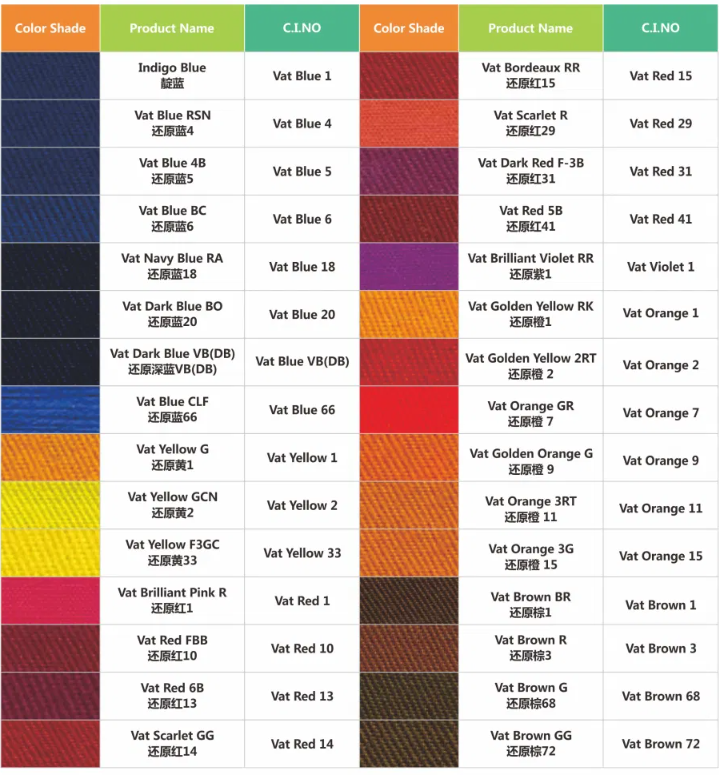Vat dyes are a special type of dye that are reduced to soluble sodium salts of chromophores under alkaline conditions. They can dye fibers and then undergo oxidation to restore their original insoluble dye and fix it on the fibers. Due to the need for reduction and oxidation during the dyeing process, this dye is called a reducing dye.
Vat dyes are insoluble in water, but they can be reduced to cryptochromic acid by strong reducing agents such as sodium hydrosulfite (commonly known as sodium hydroxides), which then reacts with sodium hydroxide to form cryptochromic sodium salts, allowing for the dyeing of cellulose fibers. After dyeing, the fibers are oxidized by air or oxidants, and the chromophore returns to its original insoluble dye, thereby fixing onto the fibers.
Vat dyes are mainly used for dyeing and printing of cotton, linen, and viscose fibers, as well as for dyeing of vinylon and soluble vat dyes made from certain vat dyes. They can also be used for dyeing protein fibers such as wool and silk. Due to its high dyeing fastness and bright color, vat dyes are widely used in the dyeing and printing processes of textiles.
The dyeing methods of vat dyes mainly include immersion dyeing, roll dyeing, and pad dyeing. During the dyeing process, it is necessary to pay attention to controlling factors such as the reduction rate of the dye, dyeing temperature, pH value, etc., to ensure the quality of the dyeing effect.
Overall, vat dyes are an important type of textile dyes with high dyeing fastness and bright colors, and are widely used in the dyeing and printing processes of textiles. Our factory mainly produce vat yellow dye, vat orange dye, vat green dye, vat red dye, vat blue dye and vat violet dye. Welcome your inquiry.
Contact person: Miss Jessie Geng
Email:jessie@xcwychem.com
Mobilephone/Whatsapp: +86-13503270825
Post time: May-06-2024






